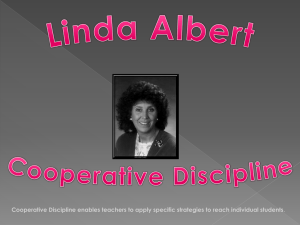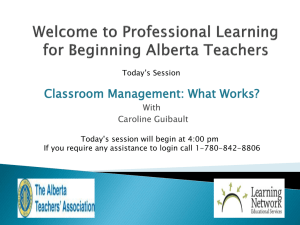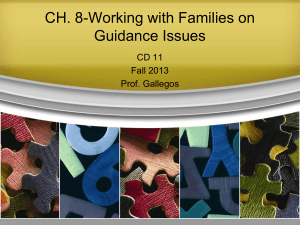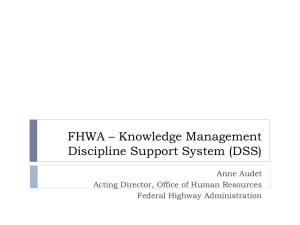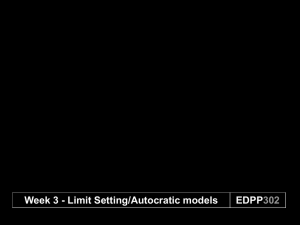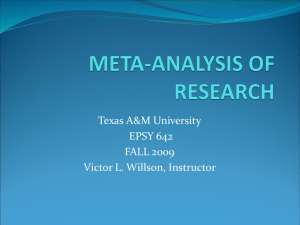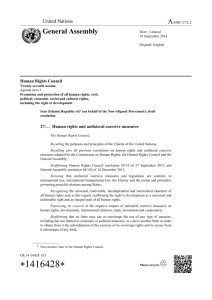MANAGING CLASSROOM BEHAVIOUR
advertisement
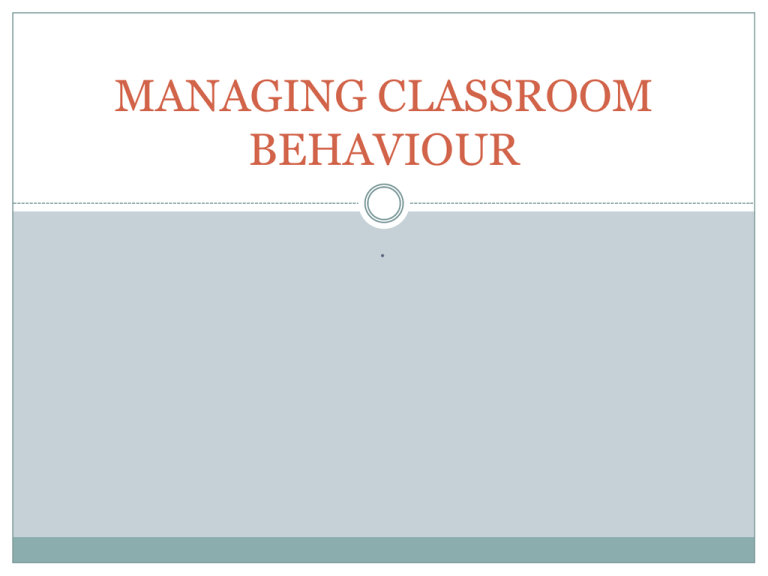
MANAGING CLASSROOM BEHAVIOUR . META-ANALYSIS .........each strand of a rope contributes to the strength of that rope............... .........but the rope is stronger than any individual strand...................... META-ANALYSIS Similarly, when a particular finding is obtained again and again under a variety of conditions, we are strongly confident that there exists a general principle of behaviour. The results of individual studies, no matter how well conducted, are unlikely to provide answers to questions of general importance. META-ANALYSIS META-ANALYSIS is a quantitative tool for comparing or combining results across a range of similar studies. INDIVIDUAL STUDY the unit of analysis looks at the response of individual subjects. META-ANALYSIS the unit of analysis is the results of individual studies. A clear distinction is drawn between ‘authoritarian’ and ‘authoritative’ classroom management styles, with the latter being more effective in improving social and academic outcomes for students. Classroom behaviour . It is now recognised that behaviour management skills in themselves are a necessary but not sufficient condition for creating an effective learning environment. John Hattie . ……………………………that it is excellence in teachers that makes the greatest difference. John Hattie Investigated three types of teachers EXPERT ACCOMPLISHED NOVICE EXPERT .................................. have deeper representations about teaching and learning and because of these deeper representations can be much more responsive to students. EXPERT ............... .............. Expert teachers are more effective scanners of classroom behaviour, make greater reference to the language of instruction and learning of students ACCOMPLISHED ………… whereas accomplished teachers concentrate more on what the teacher is saying and doing to the class ……(Hattie, 2003). NOVICE . …………………………novices concentrate more on student behaviour (Hattie, 2003). EXPERT Hattie found that expert teachers showed high respect for students. The manner used by the teacher to treat the students, respect them as learners and people, and demonstrate care and commitment for them are attributes of expert teachers. 5 strategies Effective teaching and learning requires more than an orderly classroom. Traynor, in a review of the literature, identified five strategies used by teachers in classroom management: • COERCIVE • LAISSEZ-FAIRE • TASK ORIENTED • AUTHORITATIVE • INTRINSIC (TRAYNOR, 2002). 2 most effective • AUTHORATATIVE • INTRINSIC Authoratative Using the authoritative strategy, the teacher manages student behavior by enforcing a specific and reasonable set of classroom rules (Collette & Chiapetta, 1989 as cited by Traynor, 2002). Intrinsic the intrinsic strategy for classroom order is to increase student control over himself/herself Lewis 2001 Unnecessarily harsh and punitive disciplinary practices against students create a climate that contributes to school violence. This issue is little recognized and scarcely researched (Hyman & Snook, 2000 as cited in Lewis, 2001) Lewis 2001 publication is a report of the perceptions of over 3,500 Australian school students. This study: demonstrates empirically that in the view of these students, their teachers are characterized by two distinct discipline styles. 1. Coercive discipline 2. Relational-based discipline Coercive discipline ………“coercive” discipline comprised punishment and aggression Relational-based discipline ………comprising discussion, hints, recognition, involvement and punishment Relationship-based Students who receive more Relationship-based discipline are less disrupted when teachers deal with their misbehavior and generally act more responsibly in that teacher’s class. Coercive discipline the impact of Coercive discipline appears to be more student distraction from work and less responsibility (Lewis, 2001 as cited in Lewis et al., 2005). Caring classroom ..........promotes positve student behaviour........... Caring classrooms Identified four aspects of teacher behaviour: 1. MODELLING CARING RELATIONSHIPS 2. ESTABLISHING DIALOGUES CHARACTERISED BY A SEARCH FOR COMMON UNDERSTNDING 3. RECOGNISING POSITIVE BEHAVIOURS 4. PROVIDING PRACTISE AND OPPORTUNITIES TO CARE FOR OTHERS REFERENCE Wilkinson, J. & Meiers, M. (2007). Managing student behaviour in the classroom. NSWIT Research Digest, 2008(1). Retrieved May13th, 2010, from http://www.nswteachers.nsw.edu.au



